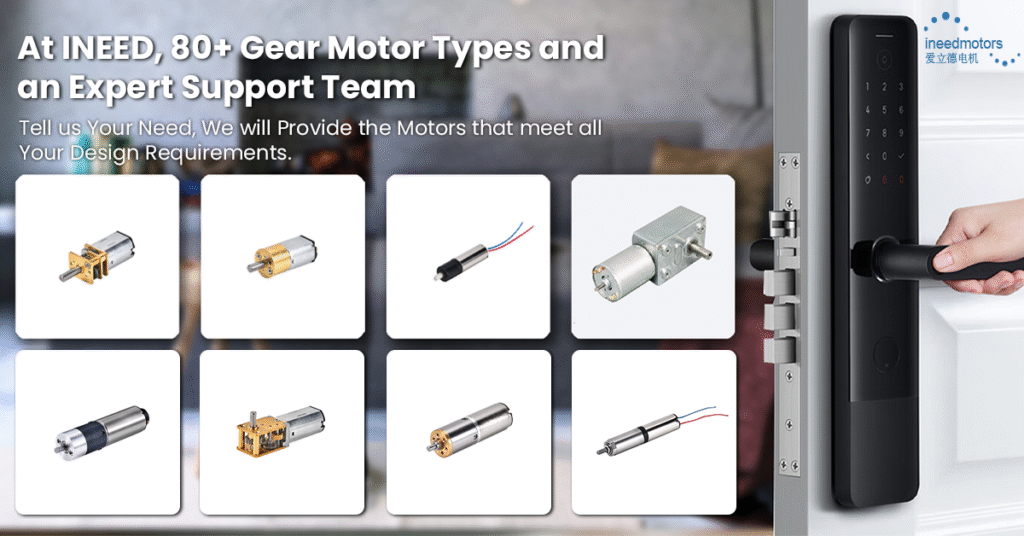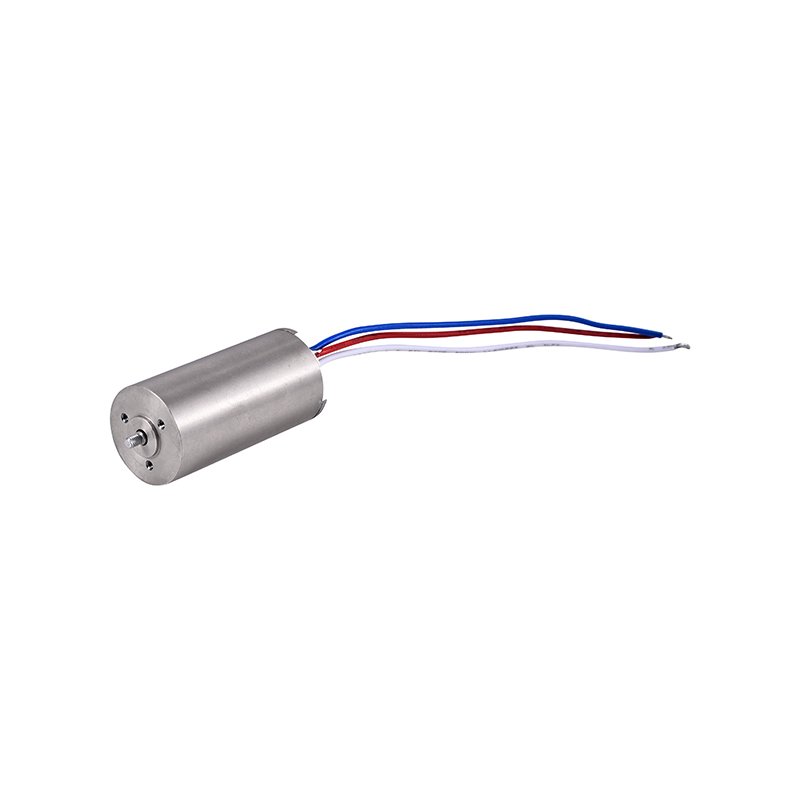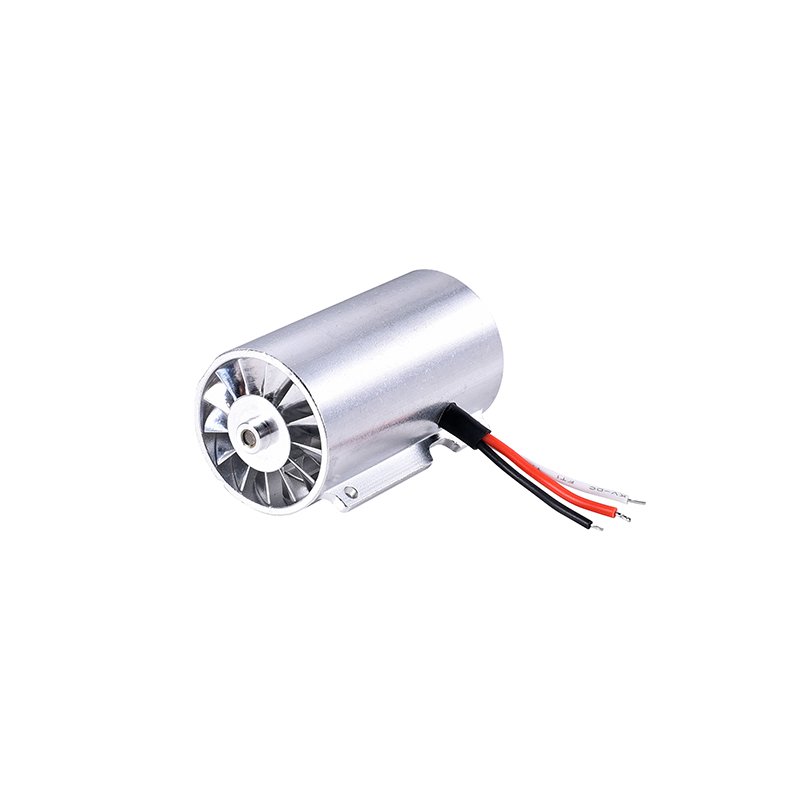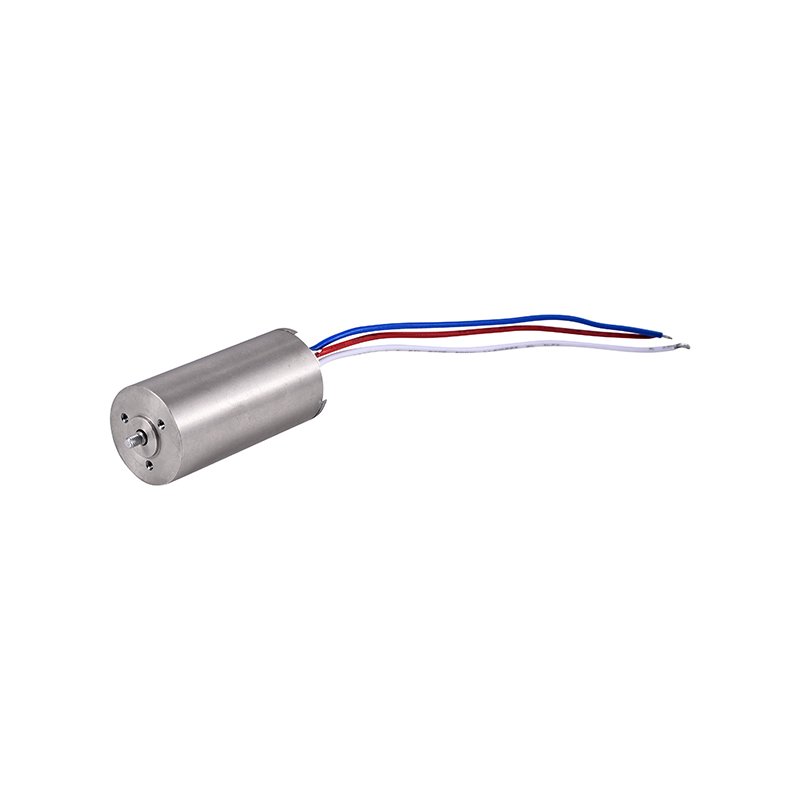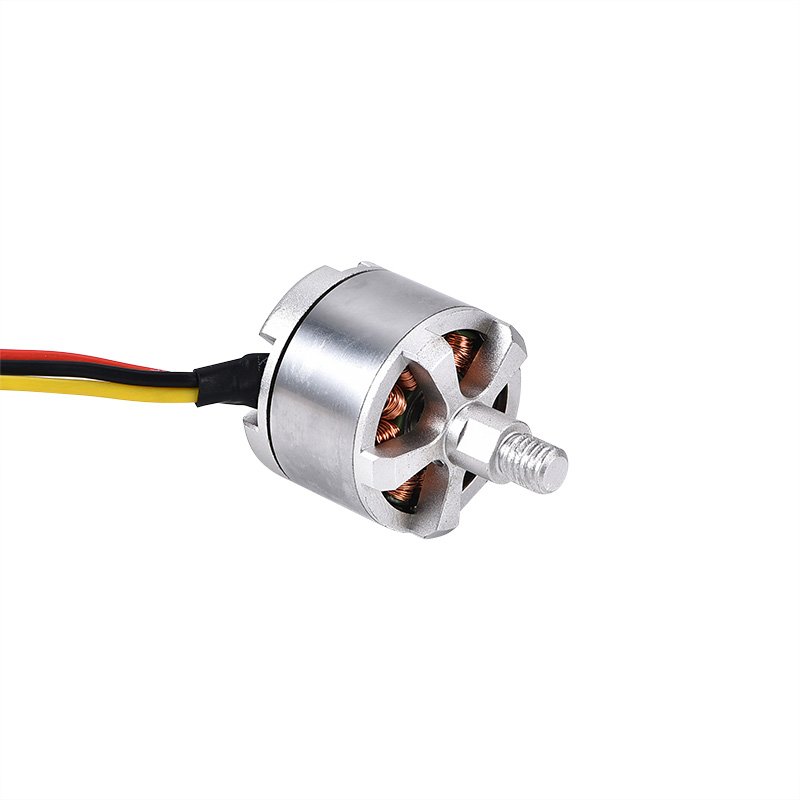A gear motor is an electric motor with a built-in gearbox. This setup lets gear motors make more torque and slow down speed. So, a small motor can move bigger things better. The gearbox changes how fast and strong the motor is. It does this by using gear ratios from 5:1 to 3600:1. This helps the motor push harder but turn slower.
Paramètres | Value Range / Specification |
|---|---|
Ratios d'engrenage | 5:1 to 3600:1 |
Rated Torque (AC gearmotors) | Up to 1000 lb-in (113 Nm) |
Rated Torque (DC gearmotors) | Up to 1535 lb-in (173 Nm) |
Power Ratings (AC gearmotors) | 1/25 to 3/4 HP |
Power Ratings (PMDC gearmotors) | 1/4 to 1/2 HP |
Speed Range (PMDC gearmotors) | 0.7 to 658 rpm |
Electric gear motors give steady power and strong torque at slow speeds. This makes them very important in many ac-powered machines. They can match inertia and control speed very well. This helps the machines work better and last longer, even when used a lot.
Principaux enseignements
Gear motors have an electric motor and a gearbox. They help small motors lift heavy things. They do this by making more torque and slowing down speed.
There are different gear types like planetary, worm, and helical. Each type has special benefits. You must pick the right one for the job and place.
AC gear motors are good for steady, hard work in factories. DC gear motors are better for fast and exact moves in robots and small devices.
To pick a good gear motor, match torque, speed, size, and power. This helps the machine work better and last longer.
The right gear motor gives better control of machines. It saves energy and makes things run smoothly. Many industries and homes use them.
Gear Motors Overview
What Is a Gearmotor
A gearmotor is a small machine that has an electric motor and a gear train together. This setup lets the gearmotor make more force but turn slower. The main job of a gearmotor is to give more power at a lower speed. Gearmotors can be ac or dc types. Each type works best for different machines and systems.
A gearmotor has two main parts:
The electric motor makes things spin.
The gear reducer changes how fast and strong it spins.
Gearmotors are used in many places. They help move conveyor belts, lifts, and small robots. The gear unit inside slows down the fast spinning of the motor. This makes the movement slower but stronger. It helps machines lift heavy things with less work.
Note: Gearmotors are grouped by how force moves through the gear unit. The main types are parallel-shaft, right-angle, and planetary gear units. Each type has special uses for ac and dc systems.
Makers build gearmotors with different gear ratios and torque levels. These features help pick the right gearmotor for each job. A gearmotor with a high gear ratio turns slowly but pushes harder. This is good for tough jobs.
Some gearmotors are made for special uses. There are standard, servo, variable speed, stainless steel, and explosion-proof types. Modular designs make it easy to change gearmotors for special needs. Their small size helps them fit in tight spaces.
How Gear Motors Work
Gear motors have an electric motor and a gearbox. The motor makes spinning energy. The gearbox uses gears to change this energy. The gears slow down the speed and make more force. This lets gear motors move heavy things or control small movements.
The main ideas behind gear motors are:
Torque multiplication: The gearbox makes the motor stronger.
Speed reduction: The gears slow down the spinning.
Gear ratios: Different gears change how much speed drops and force grows.
Gear motors use many kinds of gears. Helical, bevel, planetary, worm, and spur gears all work in different ways. Worm gears are often in right-angle gearmotors. Planetary gears are good for high force in small spaces. The gear type changes how well the gearmotor works.
Aspect | Détails |
|---|---|
Study Focus | Efficiency improvement of worm gear set in soot blower through profile modification |
Efficiency Before Modification | 68.8% |
Efficiency After Modification | 74.6% |
Amélioration de l'efficacité | 8.5% increase |
Validation Methods | Theoretical analysis, experimental testing, finite element analysis (FEA) |
Key Factors Affecting Efficiency | Number of worm wheel teeth (Z2), gear module (m) |
Suggested Parameters | Z2 = 43 teeth, m = 2.75 gear module |
Additional Notes | Methodology applicable to other gear motor applications for energy consumption reduction |
This table shows that changing gear design can make gearmotors work better. For example, changing a worm gear set made it 8.5% more efficient. Engineers use tests and computer models to check these changes.
Gear motors come in ac and dc versions. Ac gearmotors are used in big machines. Dc gearmotors are used in small devices and robots. Both types use a drive to control speed and direction. This makes gearmotors more useful.
Gearmotors help save energy. Studies show that using drives with gear motors can save up to 30% energy. This happens because of better control and higher efficiency. Good care and management also help gear motors stay efficient.
Key features of gear motors:
Small size for tight spaces.
High force for heavy loads.
Slow output speed for better control.
Many gear ratios for different jobs.
Ac and dc versions for different power.
Drives for speed and direction control.
Gearmotors are important in many areas. They power conveyor belts, wind turbines, and medical tools. The right gearmotor makes machines work better and last longer. Picking the right gear ratio and drive protects the motor and saves energy.
Types of Gearmotors
AC Gearmotors
AC gearmotors get power from alternating current. They work best in machines that need steady speed. These gearmotors can run for a long time without stopping. Factories use them in conveyor belts, mixers, and pumps. AC gearmotors can lift and move heavy things. They give strong power when starting. This helps with big jobs. They last a long time because they have fewer parts to break. AC gearmotors come in many sizes. They fit into different machines.
DC Gearmotors
DC gearmotors use direct current for power. They are good for things that need to change speed fast. These gearmotors can stop and start quickly. You see them in robots, small cars, and portable tools. DC gearmotors let you control speed and direction easily. They connect to batteries or solar panels. This makes them great for things that move or work far away. DC gearmotors are small and light. They fit in tight spaces.
Note: The biggest difference is the power source. AC gearmotors use power from outlets. DC gearmotors use power from batteries or adapters. AC gearmotors are best for steady jobs. DC gearmotors are better for quick changes or portable use.
Gear Configurations
Gearmotors use different gears to change speed and force. The main types are planetary, worm, helical, and spur gears. Each type changes how the gearmotor works.
Gearmotor Type | Efficacité | Capacité de charge | Noise & Vibration | Points forts | Weaknesses |
|---|---|---|---|---|---|
Réducteur à vis sans fin | Faible | Haut | Smooth, can heat | Quiet, self-locking | Energy loss, heat, no reverse |
Helical Gearbox | Haut | Haut | Quiet | Durable, smooth, high efficiency | Complex, higher cost |
Réducteur planétaire | Very High | Very High | Faible | Compact, precise, strong | Complex, higher cost |
Planetary gears help gearmotors work well with heavy loads. They spread the force out, so the gearmotor lasts longer. Worm gears make gearmotors quiet and able to lock in place. This is good for lifts and gates. Helical gears give smooth and quiet power. They are good for machines that must be quiet. Spur gears are simple and easy to fix. But they can be loud when spinning fast.
Tests show planetary gearmotors can be up to 97% efficient. Helical gearmotors also work well and last a long time. Worm gearmotors are quiet but lose more energy as heat. Engineers test gearmotors by checking for vibration and other things.
Gearmotors come in many shapes and sizes. Picking the right gear type helps the gearmotor work better, last longer, and save energy.
Gear Motors Applications
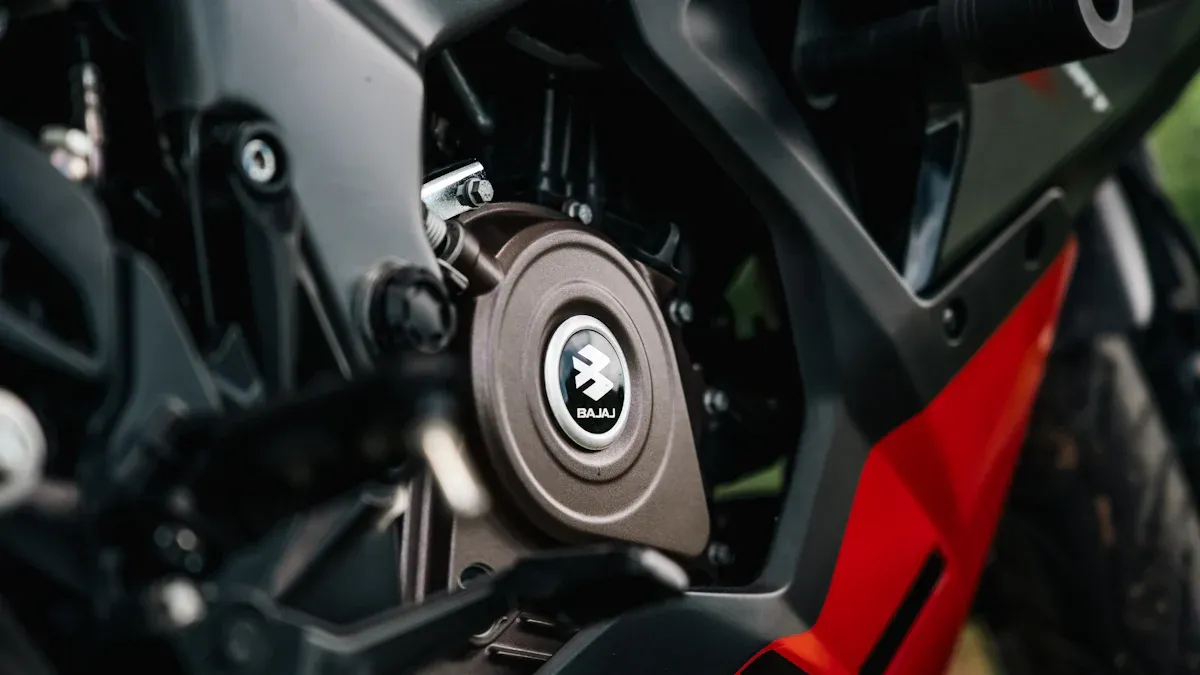
Industrial Uses
Gear motors are very important in factories. They help machines move things and lift heavy loads. Factories use them in conveyor belts and moving robots. They are also in machines that carry materials. These jobs need strong and steady power. Gear motors give the right force and control for each job.
Industrial Sector | Application Description | Reliability & Manufacturing Relevance |
|---|---|---|
Foodservice Equipment | Used in foodservice machinery for efficient operation | Over 60 years of proven reliability |
Agriculture and Farming | Power equipment that faces dust, moisture, and chemicals | Built tough for harsh environments |
Medical and Healthcare | Run medical devices that need quiet and steady motion | Meet strict industry standards for performance |
Material Handling & Conveyors | Move goods and materials in factories and warehouses | Support continuous manufacturing with cost-effective drives |
HVAC Equipment | Control fans and pumps in heating and cooling systems | Designed for durability and efficiency |
Machines industrielles | Power various machines in production lines | Focus on quality and custom engineering |
Factories, mines, and power plants use gear motors a lot. The food and drink industry uses the most gear motors. In 2023, it made up about 30% of the market. Building sites are starting to use more gear motors too. New technology and saving energy are making gear motors more popular.
Tip: Helical gear motors are a top choice in factories. They save energy and last a long time.
A study found helical gear motors were used the most in 2023. They made up 45.6% of the market. Planetary gear motors are getting more popular every year. Their use is growing by 7.6% each year until 2030. Most gear motors in these jobs are rated up to 7.5 kW.
Commercial and Consumer Uses
Gear motors are also used in stores and homes. Stores use them in automatic doors and moving displays. Offices need them for elevators and escalators. At home, washing machines and garage doors use gear motors to work safely and smoothly.
Some common uses are:
Automatic gates and security systems
Vending machines and ticket dispensers
Electric wheelchairs and mobility devices
Small robots and hobby kits
Adjustable beds and recliners
Gear motors help these things work quietly and well. Many home products need small size and low noise. Gear motors are made to fit these needs. Some gear motors use batteries, so they are good for things you can carry.
In stores and homes, gear motors give the right power for each job. They help keep things safe, easy to use, and working for a long time.
Choosing Gear Motors
Selection Criteria
To pick a gearmotor, you must know what job it will do. Engineers think about many things before choosing. They look at torque, speed, gearbox design, size, and where it will work. The NEEAMP framework helps set what is needed. NEEAMP stands for Noise, Energy, Environmental, Assembly, Material, and Physical needs.
Physical needs are things like gear ratios, speed, torque, and size.
Power transmission changes how big and strong the gears are.
Speed and torque needs decide the input and output RPM.
Gear ratio helps lower speed and make more torque.
The job decides if the gearbox is planetary, worm, or another type.
A gearmotor works well if it sends power without much loss. Gearbox efficiency tells how much power goes to the output shaft. Backlash is the space between gear teeth and matters for jobs needing accuracy. Shaft orientation, like in-line or right angle, changes the size and how it works.
Engineers also look at gear strength, AGMA quality, and which bearings to use. The housing, center distance, and temperature affect how long it lasts. Lubrication and how often it runs also matter when picking a gearmotor.
Matching to Application
To match a gearmotor to a job, you must know what the machine needs. Guides like the ElectroCraft Application Guide help engineers choose by looking at space, reduction ratio, and how it works. They check if high starting torque or high efficiency is needed.
For example, a conveyor in a factory may need an ac gearmotor for steady work. A robot arm may use a dc gearmotor for quick moves and control. The Thomasnet white paper says engineers must match specs to the project, like power source, place, and how it should work.
Tips for picking the best gear motor:
Write down the torque, speed, and space the job needs.
Pick ac or dc for the right power and control.
Choose the drive for speed and direction.
Make sure the gearmotor fits the space and way it sits.
Ask suppliers for details about the gear motor.
A good choice means the gearmotor works well and lasts long. The right match helps machines run safely and smoothly.
Gear motors use an electric motor and a gearbox together. This helps control how fast or strong something moves. There are different types like planetary, worm, and helical. Each type works best for certain jobs. When picking a gear motor, think about how much force and speed you need. You should also check if it fits in the space and works in the place you want.
Aspect | Résumé |
|---|---|
Operation Principles | Gear reducers help change force and speed for each job. |
Types | Planetary, worm, and helical types all have their own good points. |
Adéquation de l'application | The best choice depends on the job, where it goes, and the place it works. |
To get the right gear motor, look at guides or ask someone who knows a lot.
FAQ
What is the main purpose of a gear motor?
A gear motor increases torque and reduces speed. This helps machines move heavy loads or operate at controlled speeds. Gear motors make small motors more useful for many jobs.
What types of machines use gear motors?
Factories use gear motors in conveyor belts, mixers, and lifts. Homes and stores use them in washing machines, automatic doors, and vending machines. Many robots and small devices also use gear motors.
Qu'est-ce qui différencie un motoréducteur d'un moteur ordinaire ?
A gear motor has a built-in gearbox. This gearbox changes the speed and force from the motor. Regular motors do not have this feature and cannot adjust torque or speed as easily.
What are the main types of gear motors?
Gear motors come in AC and DC types. They also use different gears like planetary, worm, helical, and spur. Each type works best for certain jobs and environments.
What should someone check before choosing a gear motor?
Someone should check the needed torque, speed, size, and power source. The job and environment also matter. Picking the right gear motor helps machines work better and last longer.
